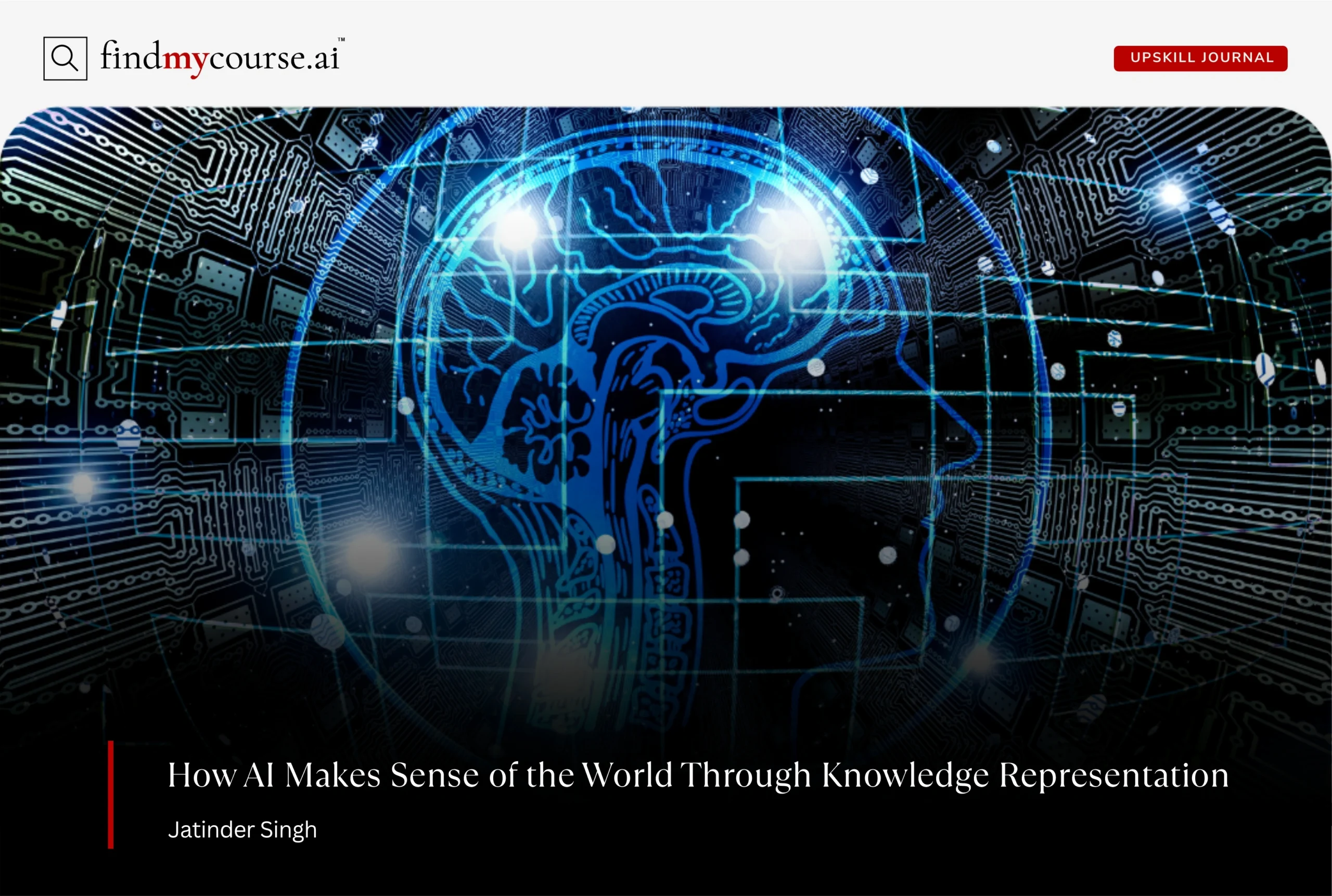In the realm of Artificial Intelligence (AI), the ability to understand and reason about the world is crucial. To achieve this, AI systems rely on how they represent knowledge. Knowledge Representation (KR) is the field dedicated to encoding information about the world into formats that AI can effectively use to solve complex problems. By doing so, AI systems can organize data in ways that reflect human understanding, which in turn enables them to reason, learn, and make informed decisions. Moreover, as AI continues to advance, Learning KR becomes increasingly essential for developing intelligent systems that can interact with the world in meaningful and practical ways.
Understanding Knowledge Representation in AI
Knowledge Representation in AI refers to the methods used to encode information about the world into a format that an AI system can understand and use to make decisions. Additionally, it is a crucial component of AI that bridges the gap between raw data and meaningful reasoning. Moreover, by representing knowledge in a structured way, AI systems can interpret data, draw inferences, and apply reasoning techniques to solve problems.
At its core, KR aims to model information in a structured manner to formally represent it as knowledge in knowledge-based systems. This structured representation allows AI systems to perform tasks such as diagnosing medical conditions, having natural-language dialogues, and making informed decisions based on available data.
Core Techniques in Knowledge Representation
In AI, knowledge isn’t just data—it’s how machines understand and reason about the world. To achieve this, several techniques turn raw information into actionable intelligence:
- Semantic Networks: Imagine a mind map where every idea connects to another. That’s a semantic network. For instance, “dog” links to “animal” and “barks,” creating a web of meaning. AI uses this to grasp context, draw associations, and even power natural language understanding. It’s like giving machines a sense of “conceptual intuition.”
- Frames: Think of frames as mental blueprints for common situations. A “restaurant” frame might include “menu,” “staff,” and “customer reviews.” When AI encounters a new restaurant, it can fill in the blanks and reason based on the template. Frames help machines handle complex scenarios quickly, just as humans rely on mental shortcuts.
- Ontologies: Ontologies are structured vocabularies that define entities and their relationships. In healthcare, an ontology might map “patient,” “diagnosis,” and “treatment.” This ensures that different AI systems “speak the same language,” enabling seamless collaboration across platforms.
- Rules and Logic: Rules turn knowledge into “if-then” statements: “If it rains, the ground is wet.” Logic-based KR gives AI the ability to reason systematically, making it invaluable for expert systems in law, medicine, or technical troubleshooting.
- Knowledge Graphs: Imagine a giant map connecting people, places, and things. Knowledge graphs do exactly that, linking data points to reveal patterns and insights. They power search engines, recommendation systems, and AI that navigates complex, real-world relationships with ease.
Each technique brings its own superpower: semantic networks capture connections, frames model scenarios, ontologies unify understanding, logic supports reasoning, and knowledge graphs reveal hidden relationships. Therefore, choosing the right approach depends on the problem AI is solving and the type of knowledge it must master.
Challenges in Knowledge Representation
While KR is fundamental to AI, several challenges persist:
- Complexity and Ambiguity: Real-world knowledge is often complex and ambiguous, making it difficult to represent accurately. For example, natural language can be interpreted in multiple ways, leading to challenges in understanding and processing.
- Scalability: As the amount of knowledge grows, maintaining and updating knowledge representations becomes increasingly challenging. Ensuring that AI systems can scale to handle vast amounts of information is crucial.
- Contextual Understanding: Knowledge representations must capture not only the facts but also the context in which they are relevant. This includes understanding nuances, cultural differences, and situational contexts.
- Integration with Machine Learning: Integrating symbolic KR with data-driven machine learning approaches remains a significant challenge. Combining the strengths of both can lead to more robust AI systems.
Addressing these challenges requires ongoing research and development in the field of KR.
Real-World Applications
KR plays a pivotal role in various AI applications:
| Application | How KR is Used | Impact / Benefit | Example / Use Case |
| Healthcare | Represents medical knowledge, patient histories, and treatment protocols. | Enables accurate diagnosis and personalized treatment plans. | AI systems like IBM Watson Health for cancer treatment recommendations. |
| Natural Language Processing | Uses semantic networks, frames, and knowledge graphs to understand language. | Powers chatbots, translation, and sentiment analysis. | Virtual assistants like Siri or Google Assistant; automated translation tools. |
| Robotics | Helps robots map environments, recognize objects, and plan actions. | Supports autonomous navigation and task execution. | Warehouse robots like those used by Amazon or autonomous delivery drones. |
| Recommendation Systems | Represents user preferences, item attributes, and relationships between products. | Delivers personalized suggestions in e-commerce and entertainment. | Netflix movie recommendations; Amazon product suggestions. |
These applications demonstrate the versatility and importance of KR in building intelligent systems that can interact with and understand the world.
The Future of Knowledge Representation in AI
The future of KR in AI is promising, with several trends shaping its evolution:
- Neuro-Symbolic Integration: Combining neural networks with symbolic reasoning aims to leverage the strengths of both approaches. This integration allows AI systems to learn from data while also reasoning in a structured manner.
- Explainable AI: As AI systems become more complex, the need for transparency increases. KR contributes to explainable AI by providing structured representations that can be interpreted by humans.
- Dynamic Knowledge Representation: Future AI systems will need to adapt to new information and changing environments. Developing dynamic KR techniques that can evolve over time is a key area of research.
- Cross-Domain Knowledge Sharing: Facilitating the transfer of knowledge across different domains can enhance the versatility of AI systems. Ontologies and knowledge graphs play a crucial role in this by providing standardized representations.
As these trends continue to develop, KR will remain at the forefront of AI research, driving advancements in intelligent systems.
Conclusion
Knowledge representation in AI is more than a technical concept—it is the foundation that enables machines to reason, learn, and make decisions in the real world. From healthcare to robotics, KR drives practical applications that improve efficiency, personalization, and problem-solving. While challenges remain, understanding and applying KR today equips AI developers and professionals to build smarter, more reliable systems. By bridging human-like understanding with computational power, knowledge representation continues to shape both current AI solutions and the intelligent systems of tomorrow.


